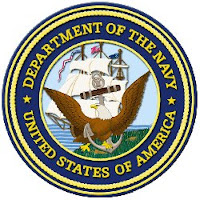U.S. Navy Cold Fusion Scientists Claim Breakthrough Possible
Thursday, March 26, 2009

Researchers at a U.S. Navy laboratory have Unveiled what they say is "significant" evidence of cold fusion, a potential energy source that has many skeptics in the scientific community.
The scientists on Monday described what they called the first clear visual evidence that low-energy nuclear reaction (LENR), or cold fusion devices can produce neutrons, subatomic particles that scientists say are indicative of nuclear reactions.
"Our finding is very significant," said analytical chemist Pamela Mosier-Boss of the U.S. Navy's Space and Naval Warfare Systems Center (SPAWAR) in San Diego, California.
"To our knowledge, this is the first scientific report of the production of highly energetic neutron from a LENR device," added the study's co-author in a statement.
The study's results were presented at the annual meeting of the American Chemical Society in Salt Lake City, Utah.
The city is also the site of an infamous presentation on cold fusion 20 years ago by Martin Fleishmann and Stanley Pons that sent shock waves across the world.
Despite their claim to cold fusion discovery, the Fleishmann-Pons Fell into discrediting study soon after other researchers were unable to reproduction the results.
Scientists have been working for years to produce cold fusion reactions, a potentially cheap, limitless and environmentally-clean source of energy.
Paul Padley, a physicist at Rice University who reviewed Mosier-Boss's published work, said the study did not provide a plausible explanation of how cold fusion could take place in the conditions described.
"It fails to provide a theoretical rationale to explain how fusion could occur at room temperature. And in its analysis, the research paper fails to exclude other sources for the production of neutrons," he told the Houston Chronicle.
"The whole point of fusion is, you? Re bringing together things of like charge. As we all know, things like brake, and you have to overcome that somehow Repulsion."
But Steven Krivit, editor of the New Energy Times, said the study was "big" and could open a new scientific field.
The neutron produced in the experiments "may not be caused by fusion but perhaps some new, unknown nuclear process," added Krivit, who has monitored cold fusion studies for the past 20 years.
"We're talking about a new field of science that's a hybrid between chemistry and physics."
Thursday, March 26, 2009

Researchers at a U.S. Navy laboratory have Unveiled what they say is "significant" evidence of cold fusion, a potential energy source that has many skeptics in the scientific community.
The scientists on Monday described what they called the first clear visual evidence that low-energy nuclear reaction (LENR), or cold fusion devices can produce neutrons, subatomic particles that scientists say are indicative of nuclear reactions.
"Our finding is very significant," said analytical chemist Pamela Mosier-Boss of the U.S. Navy's Space and Naval Warfare Systems Center (SPAWAR) in San Diego, California.
"To our knowledge, this is the first scientific report of the production of highly energetic neutron from a LENR device," added the study's co-author in a statement.
The study's results were presented at the annual meeting of the American Chemical Society in Salt Lake City, Utah.
The city is also the site of an infamous presentation on cold fusion 20 years ago by Martin Fleishmann and Stanley Pons that sent shock waves across the world.
Despite their claim to cold fusion discovery, the Fleishmann-Pons Fell into discrediting study soon after other researchers were unable to reproduction the results.
Scientists have been working for years to produce cold fusion reactions, a potentially cheap, limitless and environmentally-clean source of energy.
Paul Padley, a physicist at Rice University who reviewed Mosier-Boss's published work, said the study did not provide a plausible explanation of how cold fusion could take place in the conditions described.
"It fails to provide a theoretical rationale to explain how fusion could occur at room temperature. And in its analysis, the research paper fails to exclude other sources for the production of neutrons," he told the Houston Chronicle.
"The whole point of fusion is, you? Re bringing together things of like charge. As we all know, things like brake, and you have to overcome that somehow Repulsion."
But Steven Krivit, editor of the New Energy Times, said the study was "big" and could open a new scientific field.
The neutron produced in the experiments "may not be caused by fusion but perhaps some new, unknown nuclear process," added Krivit, who has monitored cold fusion studies for the past 20 years.
"We're talking about a new field of science that's a hybrid between chemistry and physics."

